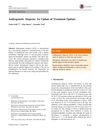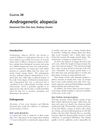Finasteride after 4.5 years: results, shedding reality and other effects Update 8/28/2025
Finasteride helped maintain hair density and prevent further hair loss over 4.5 years, with no major side effects except mild gynecomastia. Consistency and regular health checks are recommended, and the user experienced stable hair density with occasional shedding.
View this post in the Community →
Similar Community Posts Join
6 / 1000+ resultscommunity Fin/Min/VitD 3 month progress pics
A user shared their positive 3-month experience using finasteride, minoxidil, and vitamin D to treat hair loss, noting significant regrowth and minimal shedding. They also discussed potential side effects and the low likelihood of experiencing them, while being open to answering further questions.
community I have been on finasteride for 9 months. (6 months on 0.25 mg, 3 months into 0.5 mg daily) here are the progress pictures.
A user shared progress pictures after 9 months on finasteride, starting with 0.25 mg and increasing to 0.5 mg daily, noting improved hair density, especially at the crown, with initial side effects that resolved after the first month. The discussion includes user experiences with finasteride, concerns about side effects, and alternative treatments like rosemary oil and platelet-rich plasma therapy.
community Very reluctantly starting Finasteride.
A 23-year-old started taking 0.25 mg of Finasteride daily for hair loss after trying Minoxidil and derma rolling without success. People shared varied experiences with Finasteride, discussing potential side effects, effectiveness, and personal decisions regarding hair loss treatment.
community Hair loss treatment tier list by Dr Oscar Muñoz
Dr. Oscar Muñoz's hair loss treatment tier list suggests oral minoxidil and finasteride are highly effective, while topical treatments like RU58841 and microneedling are less effective. Users discuss the effectiveness of various treatments, with some favoring oral options for their practicality and higher response rates.
community Why you may be taking Dutasteride wrong
Dutasteride is more effective than finasteride for hair loss, with optimal dosing at 0.5mg once or twice a week to minimize side effects. Topical application may further reduce side effects while effectively lowering scalp DHT.
community I am a dermatologist with a clinical interest in alopecia. AMA
In this conversation, 4990 discussed various treatments for hair loss, including oral minoxidil, PRP, transplan, Jak inhibitors, Dutasteride, Finasteride, Olumiant, Ketoconazole, RU58841, microneedling, baricitinib, and CCCA. They recommended scalp biopsies in unclear cases of DUPA, twice weekly to twice daily shampooing for topical minoxidil users, and two sessions spaced one month apart with follow up at month three to determine the effectiveness of PRP treatment.
Related Research
6 / 1000+ results
research Androgenetic Alopecia: An Update Of Treatment Options
Minoxidil is the only FDA-approved topical drug for treating male or female pattern hair loss, and other medications like finasteride and dutasteride can also increase hair growth.

research Androgenetic Alopecia in Gender Minority Patients
AGA treatments like minoxidil and LLLLT are safe and effective for gender minority patients.

research Low-Level Light Therapy and Hair Loss
Low-level light therapy is FDA-approved for male pattern hair loss, increases hair count and strength, and is considered safe for use.
research Treatment of Androgenetic Alopecia: Current Guidance and Unmet Needs
More personalized and effective treatments for androgenetic alopecia are needed.

research Overactive Bladder in Men: Finasteride for Androgenetic Alopecia
Finasteride increases hair count and improves hair growth with low risk of side effects.

research Safety Concerns When Using Novel Medications to Treat Alopecia
Consider benefits and risks of new alopecia treatments for safety.